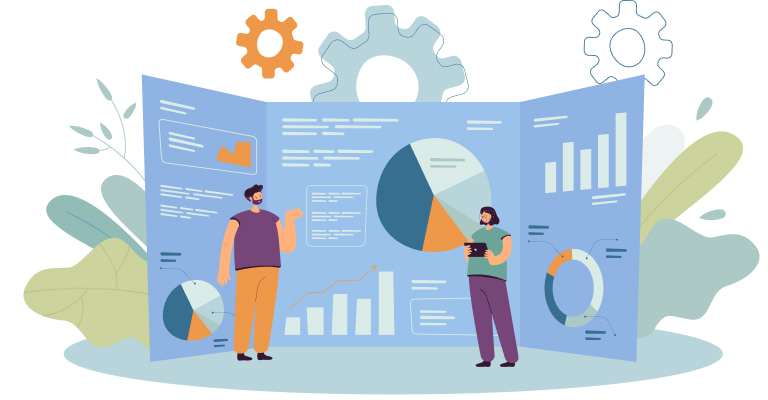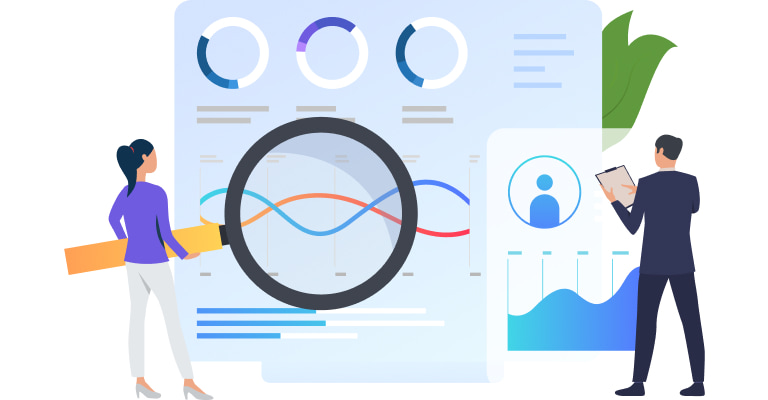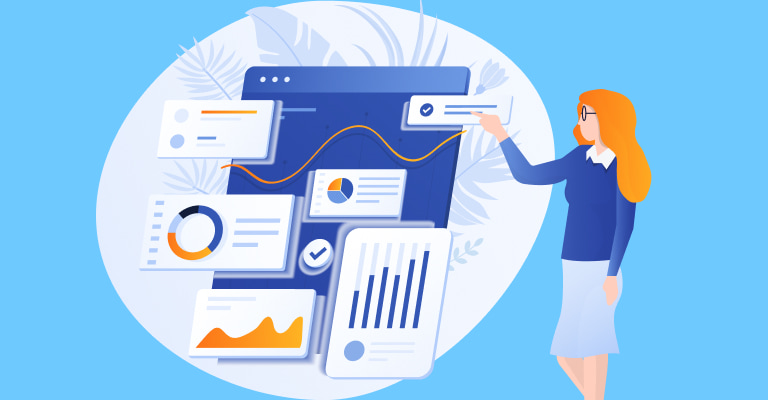
Day trading is a challenging trade choice to many investors due to the stringent regulations attached to it. But just like any other business, the higher the risk, the more profitable the business.
In This Guide
What’s Day Trading?
Day trading is where you buy and sell financial instruments like bonds, stocks, commodities, and such to make a profit. The profit comes from the underlying security in a single trading day. Positions are held for seconds to hours but closed out before the market closes to avoid overnight exposure to risk. Day trading is, in other words, referred to as intraday or short-term trading.
Round trip is a common term in day trading, which means entering and exiting the same position. Thus day time trading is a series of speculative round trips executed within the trading hours.
Day Trading Strategies
As a day trader, you hope that the securities you buy will gain or lose value for the short time you hold it, a few seconds or minutes. It’s about seeking higher profits from the market in exchange for a greater risk of loss.
However, if you use the right day trading strategies, you’ll have a small daily INS, which will translate to substantial long-term profits.
If you want to try the high-risk, high-stakes world of daytime trading, you can employ the day trading strategies outlined below.
- The Momentum Trading Strategy
The momentum strategy is popular with beginner traders. Here you can buy securities as they rise and then sell them when the princes have reached their peak.
Momentum trading securities are rare to find – on a given day, about 10 out of 5000 fit this criterion. You jump on a security whose price is moving.
When using this strategy, watch out for the following;
- Smaller securities trading faster
- A significant move in price driven by market catalysts like news that a big company has been acquired by a smaller one.
Due to the high risk involved, you can protect from oversize losses; you should set a stop-loss order below the first price decline. This allows you to place a sell order of the security at a predetermined price. If the securities’ quotes fall to a particular point, they’re automatically sold; thus, you’re protected from further losses.
- Scalping Strategy
This strategy operates on the philosophy that small wins will add up to lots of money in the long run. It’s about prioritising making high volumes from small profits. Here, you must have a strict exit strategy because any significant loss can deplete the gains you’ve made all along.
The scalper has predetermined sell and buy targets to which they stick. It’s such a fast strategy where several trades can be made in seconds. Scalping is an excellent strategy for the confident trader who makes quick decisions without dwelling.
Adherents of this strategy are highly disciplined, so they sell immediately the securities experience a decline, thus minimizing losses.
If you’re not a razor-sharp trader, this is not a day-trading strategy for you.
- Pullback Trading Strategy
The first step here is to look for an ETF or security that has an established trend. Then monitor the trend until there’s a price decline. Upon establishing an upward trend, then the pullback is an entry point for you to buy.
To understand financial trends, the day trader uses charts. Look at an uptrend with some successive high price movement before a price decline. Don’t panic if the trend reverses after you buy in; it continues for some time, and in fact, many pullback candidates make the most significant gains.
- Breakout Trading Strategy
This is a highly calculated move where you monitor the trading volume and the many changing hands. Breakout trade takes place at the point where prices rise above the former resistance price.
The security retreats upon hitting resistance level to the point when there is a catalyst for stronger price movement. Above this price, the sellers are more than buyers, and therefore no possibility of a price hike.
- News Trading
When there are news events, the market reacts quickly, and a lousy earnings report could lead to a fall in the security price. For instance, approval for a new drug will cause a stake to take off. Traders keep an eye on such news and capitalize on them.
How to Day Trade
Day trading securities have short-term volatility, and therefore you must be committed so that you take advantage of the windows available to make a good margin.
However, the idea of turning quick profits shouldn’t enchant you- it’s not a make-rich-quick investment, and more people lose money. Clever investors hold low-cost index funds tracking a broad market index. For instance, S&P has a total return of about 10% annually.
Here are tips on how to approach day trading in the safest way possible:
- Trade with an Amount you Can Afford to Lose
Chances of going at a loss in day trading are higher than the gains due to increased volatility. Thus, it’s prudent to set aside a certain amount of money for this kind of trade. Never go beyond the amount you’ve set for trade. The reason is simple; you’ll most likely lose.
- Start Small and Grow
At the initial stages, you’ll make mistakes and lose money. Keep a tight rein until you gain some experience and begin to make a profit.
- Don’t Quit Your Job
There’s always a temptation to want to quit your daytime job, especially when you’ve got a run of luck. Hold your horses; wait until you see how the market gets tough and rough during the recession before you think of expanding your efforts. Once you become consistent in making profits, you can now think of devoting more time to trading.
Best Securities for Day Trading
Before you plunge into day trading, you’ve to decide on the securities you’re going to buy and sell. You can take day trade futures, options, bonds, currencies, and commodities. The market is usually big and active, and the commissions are either non-existent or relatively low.
For the best trading securities, check out the following characteristics;
- Good Volume
Stocks are pretty appealing to many day traders because they’re liquid, which means they trade in high volume. Liquidity means you can buy and sell without affecting the price significantly. Other highly liquid markets are currency markets.
- Volatility
Volatile securities change in prices frequently, and this is necessary if you’ve to make any reasonable profit as a trader. Upon taking a position, someone should be willing to pay a different price.
- Your Grip on the Securities
What’s your understanding of the security trades, and what triggers moves? Is a security bouncing between two prices or stuck in a range? The more familiar you are with a particular security, the easier it is for you to trade and make significant margins.
- Newsworthiness
Media coverage ignites the market by getting people interested in buying and selling a security. That creates volatility and liquidity. As a day trader, you’ve to follow the news to know the direction the market is taking, and therefore you can strategize appropriately.
As a day trader, you should use technical analysis to analyze the securities movement on a chart and not just fundamental analysis where you examine company factors like industry, management, or products. You may choose to exchange dozens of securities in a day or focus on just a few, but your choice will depend on your level of experience.
How to Day Trade
You’re now convinced and want to taste the day trading waters? How do you go about it?
Like most things in life, day trading is something you need to master since it takes time and resilience.
Find below steps to day trading:
- Learn
This is the most crucial part of a day trader. You can’t drive a car unless you’ve got the skills. Similarly, learning how to day trade will take time. You’ve to take time to read and educate yourself. That involves understanding the risk and that you could lose lots of money in the trade. Thus you should spend time learning how to lose and not to lose money in day trading.
- Decide on the Market you Want to Venture Into
Which financial market do you want to trade? Is it the stock market or currency (forex)? Or you probably want to trade commodities or trade futures.
Picking a market is, therefore, a crucial part of the process of becoming a day trader. As a beginner, it’s advisable that you stick to a single trading market.
Sticking to one market allows you to understand how day trading works and begin appreciating the dynamics in moving and shifting this market. You can’t learn all that in a few hours or days; you’ll need a lot of chart time.
- Get a Virtual Trading Account
A trainee pilot is given a simulator first before they can fly a real aircraft. Same way, a day trader needs a virtual trading account.
What’s a virtual account? This is an account you open and is made of virtual funds- not real money and therefore no risk. Also known as a demo account, allows you to trade live market prices using virtual money. You learn to use your broker’s platform, using different types of orders like limit orders, sell stop, buy stop, and such.
You also learn how to have a trading loss and take profit, candlestick, and price action.
Before you decide to trade with a broker, find out first if they allow you to open a demo account.
- Open a Live Trading Account
Now you’ve graduated from the university of day trading. It’s time to go to work – get a day trading account. Remember, the account you open will depend on the financial market you choose to trade, and your broker should guide you on the best and the amount of money to begin with.
You can open an account for as little as $50, but such an amount will be too little to make a significant gain. It’s an investment like any other, so you’ve to be ready to burn your fingers. Think of a minimum of $10,000 but make sure the money is not something that will leave you devastated in case you lose.
- Day Trade
You’re now ready to day trade. You’ve put all the hours and effort into learning and trying the demo account. It’s time to plunge into the ‘deep.’ Get money into your trading account; it’s your first sell trade. Your dream should be making millions but beware, and the market you’re entering is highly infested with sharks.
Ensure you employ the risk management tactics, and you could see your $10,000 account grow into millions of dollars.
Day Trading Rules that You Must Follow
As mentioned earlier, day trading is a risky investment where you could lose your hard-earned money in hours, if not minutes.
Therefore, the following rules will cushion you from going into significant losses.
- Remember the 3 E’s
As a day trader, you must keep in mind the Entry, Exit, and Escape price.
What’s the meaning of 3 Es?
Before you press the sell or buy button, the trading system’s signals should tell you the right time to get in trade and when to exit at a profit. Or, if your trade doesn’t go to the expectations, you should know how to escape with minimal loss. As you day trade, think of how to cut your losses short.
- Avoid Low-Market Volatility Periods
If you get into the financial market, you need to avoid trading when the volatility is low. This is quite common with the Asian forex market session.
What is low volatility in trading? Simply put, this is a period when the market is slow and stagnant; thus, the price won’t move as such. During such times, it isn’t easy to make a profit.
- Use Margin With Caution
If you are trading in the forex market, you’re going to be involved in margin trading.
What is margin trading? That means much of what you’re using to trade is borrowed from the broker with little contribution from you. Trading with a margin is two-fold; you could earn high profits and increase your trading losses. Therefore before you start trading, get more information about margin trading and forex leverage.
- Have a Trade Exit Plan
A trade exit plan will tell when profit target or stop-loss order is reached, the specific time when you must exit all trades, and when to escape before a major forex news release.
You need a trade exit plan because the forex market is unpredictable, and you’d better lock the profits and cut short your losses.
- Keep a Trade Journal
Your trading platform will display your trades but making notes on your trading progress; why you took a trade, where you placed your profit targets, and stop-loss – after a win or a loss, you’ll know what you did and areas you can improve.
Most importantly, learn from your losing trades; here you know why you lost, whether you risked too much or didn’t follow your risk management plan. From your losing trades, you know the kind of a day trader you are.
Forex Day Trading Strategies
If you’re a beginner in forex trading, the first thing then the first thing you need to do is opening a demo trading account. Many first-time day trading forex traders make the mistake of trading in large amounts. You can predict the results; massive losses, and you may end up giving up on forex trading.
The tips below will help you trade wisely and be on a profit trajectory while avoiding losses.
- Close all Position at the end of the Trading Day
There’s no best forex trading day strategy. Some will be better than others, but some will be more effective for some traders than others.
Why should a trader close their trade by the end of a trading day?
There are two benefits in this;
- If you leave the position open overnight, profound changes may happen, and before you return to the platform, that could mean serious losses.
- There could be a major economic pronouncement that may impact the currency pairs, and you could lose your positions.
Thus when you close all positions at the end of a business day, you guard against any potential risks.
- Trading News Releases
Another important forex trading strategy would be to keep in touch with the breaking economic news. That means you’ve to understand charts, Bollinger bands, moving averages, and technical analysis, among other tools. The tools may prove challenging to use for a beginner, and therefore, the best option would be to focus on the latest economic news.
Major brokers and forex news sites have economic calendars, showing you the volatility for the event. You’re also able to compare the actual figures with the previous, and therefore you have an idea of the overall trend of the indicators.
- Get some Trend-following Techniques.
Experienced forex traders will capitalise on breakouts while others look for signs of reversal and thus employ counter-trend tactics.
The above tricks may not apply to a newbie in forex trading. Still, trend-following – here, the trader analyses currency pair charts with exponential moving averages and carefully checks to confirm the uptrend or downtrend and open positions.
- Setting Correct Profits/ Loss Ratios
If you’ve little experience in forex trading, don’t set high goals. What options do you have then? The principle of 2:1 profit to loss ratio is common in stocks but equally applicable in forex.
The truth is that no specific strategy is perfect when it comes to forex trading. All you need to do is try every, do your research, and see what works for you. Again, there’s no standard amount of pips for setting profit target lever or stop-loss level, and every currency pair has its average volatility.
Swing Trading vs. Day Trading
Swing trading involves holding positions for days or weeks. It’s a strategy that’s not much concerned with second-to-second price movements, but its focus is to capture a portion of the overall trend.
For example, to gain exposure to the markets, swing traders use CFDs, both of which are derivative products meaning you can use them to speculate on the rise and fall of asset prices.
Following are some differences between swing and day trading;
- In swing trading, you trade over days or weeks, while in day trading, you can trade multiple times in a single day.
- With swing trading, it’s less risky to hold positions overnight, but day trading presents high chances of loss, and thus not prudent to leave the position open.
- You incur overnight funding charges with swing trading, while day trading has greater transaction costs.
The forex market’s high volatility and liquidity makes it a popular market for day traders. However, the high market volatility could lead to rapid price changes, and if you’ve no strategies to manage risks, you may end up with losses.
Conclusion
Day trading is not for those who want to ‘get-rich-quick’ but those who choose to learn, begin small, and progressively grow to a level where they can manage risk and invest in high stakes. You need day trading tips to help you navigate the market’s murky waters, minimise losses and make profits.
Read more about him by visiting his LinkedIn profile or contact us directly to learn more about the team.Our Author:






COMMENTS